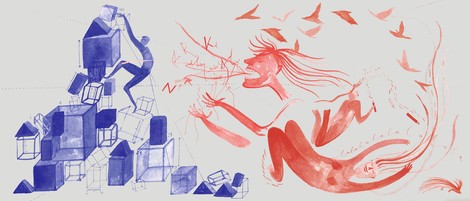Your podcast discovery platform
Curious minds select the most fascinating podcasts from around the world. Discover hand-piqd audio recommendations on your favorite topics.

piqer for: Boom and bust Health and Sanity Global finds Doing Good
Danielle Batist is an experienced freelance journalist, founder of Journopreneur and co-founder of the Constructive Journalism Project. She lived and worked all around the globe and covered global and local stories of poverty, exclusion and injustice. Increasingly, she moved beyond ‘problem-reporting’ to include stories about the solutions she found. She witnessed the birth of the new nation of South Sudan and interviewed the Dalai Lama. She reported for Al Jazeera, BBC and the Guardian and regularly advises independent media organisations on innovation and sustainability. She loves bringing stories to the world and finding the appropriate platforms to do so. The transformation of traditional media fascinates rather than scares her. While both the medium and the message are changing, she believes the need for good storytelling remains.
Brain Tricks: We’re Not As Smart As We Think
So, what can we do about the fact that we try to manipulate the world with the help of a brain that doesn’t interpret reality nearly as well as we thought it did?
This is just one of the many fascinating questions this article tries to answer. It is one of those stories that would never make it into a traditional mainstream newspaper because there is no "news hook". That’s exactly why it fits De Correspondent, a Dutch media platform (with some English language stories like this) that goes beyond the news to uncover stories that don’t just matter today, but every day.
For non-brain specialists, it can be a bit complicated to understand at first. I had to read most paragraphs several times to really grasp them (ironically, the story really is all about our ability to grasp things and how exactly we do that):
“Our left brains can apparently fabricate a story in seconds that molds reality to our own theories. It is the nature of the right hemisphere to question this kind of self-invented theory. But in our increasingly abstract reality, which our left hemisphere mistakes for all of reality, it’s astonishingly easy for that step to get skipped.”
Luckily, the story is full of real life examples that bring the complex workings of our brain to life:
A woman is told that her brother has died. She goes to the hospital and asks to see the body. In the morgue, she touches her brother’s body. It’s warm. The woman thinks, that can’t be right! She also thinks she feels a pulse. She tells the nurse who’s standing by, “I think my brother is alive!”
To which the nurse replies, “Oh, no, don’t worry dear, it’s on this sheet of paper: he’s dead.”
“The woman runs into the corridor and speaks to a passing doctor, who examines the body and says, “My God, this man is alive!” The doctor administers adrenaline straight into his heart. The man, no worse for his stay in the morgue, goes back to life as usual.
If that doesn’t make you want to read on, I don’t know what will.
